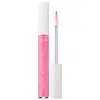What's inside
What's inside
 Key Ingredients
Key Ingredients

 Benefits
Benefits

 Concerns
Concerns

 Ingredients Side-by-side
Ingredients Side-by-side

Butyrospermum Parkii Butter
Skin ConditioningBis-Diglyceryl Polyacyladipate-2
EmollientMangifera Indica Seed Butter
Skin ConditioningDiisostearyl Malate
EmollientHydrogenated Polyisobutene
EmollientSynthetic Beeswax
Emulsion StabilisingPolymethylsilsesquioxane
Silica
AbrasiveDimethicone
EmollientBis-Behenyl/Isostearyl/Phytosteryl Dimer Dilinoleyl Dimer Dilinoleate
EmollientCetyl Ricinoleate
EmollientSynthetic Fluorphlogopite
CI 77220
Cosmetic ColorantHelianthus Annuus Seed Oil
EmollientPersea Gratissima Oil
Skin ConditioningSynthetic Wax
AbrasiveSucrose Tetrastearate Triacetate
EmollientTheobroma Cacao Seed Butter
EmollientTribehenin
EmollientCandelilla Cera
EmollientPrunus Avium Seed Oil
EmollientMalpighia Punicifolia Fruit Extract
AntioxidantAstrocaryum Murumuru Seed Butter
EmollientTocopheryl Acetate
AntioxidantTocopherol
AntioxidantGlycine Soja Oil
EmollientCaprylic/Capric Triglyceride
MaskingStevioside
MaskingTriethoxycaprylylsilane
Dehydroacetic Acid
PreservativeDimethicone/Vinyl Dimethicone Crosspolymer
Skin ConditioningParfum
MaskingPhenoxyethanol
PreservativeButyrospermum Parkii Butter, Bis-Diglyceryl Polyacyladipate-2, Mangifera Indica Seed Butter, Diisostearyl Malate, Hydrogenated Polyisobutene, Synthetic Beeswax, Polymethylsilsesquioxane, Silica, Dimethicone, Bis-Behenyl/Isostearyl/Phytosteryl Dimer Dilinoleyl Dimer Dilinoleate, Cetyl Ricinoleate, Synthetic Fluorphlogopite, CI 77220, Helianthus Annuus Seed Oil, Persea Gratissima Oil, Synthetic Wax, Sucrose Tetrastearate Triacetate, Theobroma Cacao Seed Butter, Tribehenin, Candelilla Cera, Prunus Avium Seed Oil, Malpighia Punicifolia Fruit Extract, Astrocaryum Murumuru Seed Butter, Tocopheryl Acetate, Tocopherol, Glycine Soja Oil, Caprylic/Capric Triglyceride, Stevioside, Triethoxycaprylylsilane, Dehydroacetic Acid, Dimethicone/Vinyl Dimethicone Crosspolymer, Parfum, Phenoxyethanol
Diisostearyl Malate
EmollientHydrogenated Polyisobutene
EmollientPolybutene
Hydrogenated Poly(C6-14 Olefin)
EmollientMicrocrystalline Wax
Emulsion StabilisingTheobroma Grandiflorum Seed Butter
Skin ConditioningParfum
MaskingPolyglyceryl-2 Diisostearate
EmulsifyingMacadamia Integrifolia Seed Oil
Skin ConditioningBenzyl Benzoate
AntimicrobialEthylene/Propylene/Styrene Copolymer
Olea Europaea Fruit Oil
MaskingButylene/Ethylene/Styrene Copolymer
Copernicia Cerifera Wax
Carthamus Tinctorius Seed Oil
MaskingPassiflora Edulis Seed Oil
EmollientEuterpe Oleracea Fruit Extract
Linalool
PerfumingBenzyl Salicylate
PerfumingTalc
AbrasiveLimonene
PerfumingTocopherol
AntioxidantIsostearic Acid
CleansingGeraniol
PerfumingPentaerythrityl Tetra-Di-T-Butyl Hydroxyhydrocinnamate
AntioxidantTocopheryl Acetate
AntioxidantCI 77891
Cosmetic ColorantCI 73360
Cosmetic ColorantCI 45410
Cosmetic ColorantDiisostearyl Malate, Hydrogenated Polyisobutene, Polybutene, Hydrogenated Poly(C6-14 Olefin), Microcrystalline Wax, Theobroma Grandiflorum Seed Butter, Parfum, Polyglyceryl-2 Diisostearate, Macadamia Integrifolia Seed Oil, Benzyl Benzoate, Ethylene/Propylene/Styrene Copolymer, Olea Europaea Fruit Oil, Butylene/Ethylene/Styrene Copolymer, Copernicia Cerifera Wax, Carthamus Tinctorius Seed Oil, Passiflora Edulis Seed Oil, Euterpe Oleracea Fruit Extract, Linalool, Benzyl Salicylate, Talc, Limonene, Tocopherol, Isostearic Acid, Geraniol, Pentaerythrityl Tetra-Di-T-Butyl Hydroxyhydrocinnamate, Tocopheryl Acetate, CI 77891, CI 73360, CI 45410
Ingredients Explained
These ingredients are found in both products.
Ingredients higher up in an ingredient list are typically present in a larger amount.
Diisostearyl Malate is an emollient and most often used in lip products. It comes from isostearyl alcohol, a fatty acid, and malic acid, an AHA.
As an emollient, Diisostearyl Malate helps create a thin film on your skin to trap moisture in. This helps keep your skin soft and smooth.
Hydrogenated Polyisobutene is a synthetic polymer. Polymers are compounds with high molecular weight. Hydrogenated Polyisobutene is an emollient and texture enhancer.
In one study, Hydrogenated Polyisobutene showed better skin hydration levels than Caprylic/Capric Triglyceride. As an emollient, it helps keep your skin soft and hydrated by trapping moisture in.
Hydrogenated Polyisobutene is often used as a mineral oil replacement.
Learn more about Hydrogenated PolyisobuteneParfum is a catch-all term for an ingredient or more that is used to give a scent to products.
Also called "fragrance", this ingredient can be a blend of hundreds of chemicals or plant oils. This means every product with "fragrance" or "parfum" in the ingredients list is a different mixture.
For instance, Habanolide is a proprietary trade name for a specific aroma chemical. When used as a fragrance ingredient in cosmetics, most aroma chemicals fall under the broad labeling category of “FRAGRANCE” or “PARFUM” according to EU and US regulations.
The term 'parfum' or 'fragrance' is not regulated in many countries. In many cases, it is up to the brand to define this term.
For instance, many brands choose to label themselves as "fragrance-free" because they are not using synthetic fragrances. However, their products may still contain ingredients such as essential oils that are considered a fragrance by INCI standards.
One example is Calendula flower extract. Calendula is an essential oil that still imparts a scent or 'fragrance'.
Depending on the blend, the ingredients in the mixture can cause allergies and sensitivities on the skin. Some ingredients that are known EU allergens include linalool and citronellol.
Parfum can also be used to mask or cover an unpleasant scent.
The bottom line is: not all fragrances/parfum/ingredients are created equally. If you are worried about fragrances, we recommend taking a closer look at an ingredient. And of course, we always recommend speaking with a professional.
Learn more about ParfumTocopherol (also known as Vitamin E) is a common antioxidant used to help protect the skin from free-radicals and strengthen the skin barrier. It's also fat soluble - this means our skin is great at absorbing it.
Vitamin E also helps keep your natural skin lipids healthy. Your lipid skin barrier naturally consists of lipids, ceramides, and fatty acids. Vitamin E offers extra protection for your skin’s lipid barrier, keeping your skin healthy and nourished.
Another benefit is a bit of UV protection. Vitamin E helps reduce the damage caused by UVB rays. (It should not replace your sunscreen). Combining it with Vitamin C can decrease sunburned cells and hyperpigmentation after UV exposure.
You might have noticed Vitamin E + C often paired together. This is because it is great at stabilizing Vitamin C. Using the two together helps increase the effectiveness of both ingredients.
There are often claims that Vitamin E can reduce/prevent scarring, but these claims haven't been confirmed by scientific research.
Learn more about TocopherolTocopheryl Acetate is AKA Vitamin E. It is an antioxidant and protects your skin from free radicals. Free radicals damage the skin by breaking down collagen.
One study found using Tocopheryl Acetate with Vitamin C decreased the number of sunburned cells.
Tocopheryl Acetate is commonly found in both skincare and dietary supplements.
Learn more about Tocopheryl Acetate